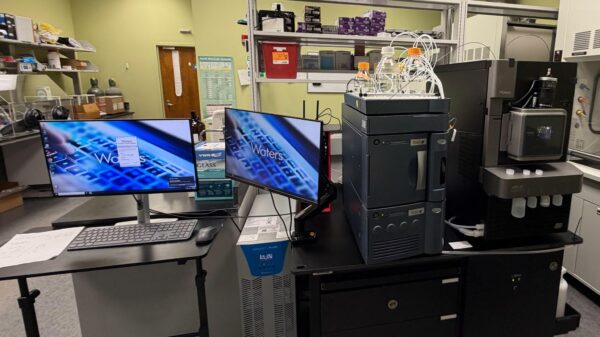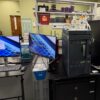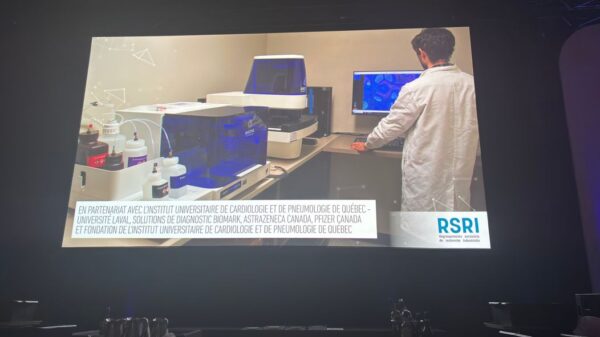Researchers at the National Institutes of Health (NIH) have concluded in a recent study that early onset cancer rates are on the rise. Unfortunately, this comes at a time when funding cuts have hit the NIH rather hard. Nowadays, the future for cancer patients isn’t in the hands of public facing institutions, but the private sector.
Cancer treatment markets are set to expand rapidly over the next decade. Analysts at Precedence Research expect immunotherapy alone to hit an annual market size of US$1.2 trillion by 2033. This growth reflects a strong compound annual growth rate of 18 per cent.
Meanwhile, global oncology spending continues to surge. Vision Research Reports projects it will climb past US$900 billion, rising at an estimated 11 per cent each year.
Together, these forecasts highlight a massive shift in the healthcare landscape. As new treatments emerge and demand rises, the market is poised for unprecedented growth.
Here are a handful of companies taking advantage of this situation.
Oncolytics tech makes tumours more vulnerable to attack
Oncolytics Biotech Inc. (NASDAQ: ONCY) (TSE: ONC) is gaining fresh visibility ahead of its 2025 ASCO Annual Meeting presentation. There, the company will unveil new clinical trial data on pelareorep’s immunological activity in pancreatic cancer.
The GOBLET study provides the latest findings. It also shows pelareorep appears to convert immunologically “cold” tumours into “hot,” inflamed environments. This shift could make tumours more vulnerable to immune attack.
Moreover, new analyses reveal that pelareorep induces a pro-inflammatory tumor microenvironment. It also activates both innate and adaptive immunity.
This dual activation is significant. Pancreatic ductal adenocarcinoma (PDAC) rarely responds to immune based therapies. Pelareorep’s results mark a rare and promising breakthrough.
“For the first time, we’re able to map the cascade of immune responses stimulated by pelareorep,” said Thomas Heineman, M.D., Ph.D., Chief Medical Officer for Oncolytics.
“It starts with the expansion of anti-reovirus T cells, followed by the upregulation of chemokines that mediate the expansion of pre existing TIL (tumour infiltrating lymphocyte) clones in the blood.”
Heineman explained that the immune cells not only expand in the bloodstream but also return to the tumor and help shrink it.
These T cells actively attack the tumor, which leads to a measurable reduction in its size. Additionally, pelareorep increases the expression of chemokines, making the tumour microenvironment more immunologically active.
This activation allows the environment to recruit cancer specific T cells directly to the tumour site.
New mechanistic insight builds on GOBLET Cohort 1
On June 2, 2025, researchers will present the abstract titled “Role of pelareorep in activating anti-tumor immunity in PDAC” as a poster during the Developmental Therapeutics Immunotherapy session. After the session, Oncolytics will post a copy on the Media page of its website.
This new mechanistic insight builds on earlier findings from GOBLET Cohort 1. In that study, pelareorep combined with nab-paclitaxel, gemcitabine, and atezolizumab produced a 62 per cent overall response rate. It also achieved an 85 per cent disease control rate and a 45 per cent 12 month survival rate in first line metastatic PDAC patients.
GOBLET is a multiple cohort, phase 1/2 study evaluating pelareorep with various immunotherapy and chemotherapy regimens across gastrointestinal cancers. Oncolytics is conducting the trial in partnership with AIO Studien gGmbH in Germany. It uses an adaptive design, allowing cohorts that meet efficacy thresholds to expand enrollment.
In pancreatic cancer, GOBLET serves as a proving ground for pelareorep in first line and newly diagnosed settings. This could set the stage for future pivotal decisions.
Progress continues in other parts of the study. In Cohort 5, newly diagnosed metastatic PDAC patients received pelareorep with modified FOLFIRINOX, with or without atezolizumab. After evaluating six patients in a safety run in, both Germany’s Paul Ehrlich Institut and an independent data safety board cleared the study to proceed.
A USD$5 million PanCAN grant supports this arm. Additionally, more data will be available in 2026. If results are favorable, pelareorep could expand its addressable market in this indication.
Read more: Breath Diagnostics pioneers novel lung cancer breath test
Read more: Breath Diagnostics takes aim at lung cancer with One Breath
Akoya Biosciences brings in big name revenue after merger
Akoya Biosciences, Inc. (NASDAQ: AKYA) recently reported Q1 2025 revenue of US$16.6 million. Installed instruments rose 12 per cent year over year, while total publications jumped 44.7 per cent. The company also improved its gross margin to 59.3 per cent and narrowed operating losses by 38 per cent compared to Q1 2024.
Akoya also comes from major cancer collaborations in the U.S. and Singapore. At AACR, it unveiled a new ADC breast cancer assay.
Just two weeks earlier, Akoya and Quanterix Corporation (NASDAQ: QTRX) amended their merger agreement. They reduced share issuance by more than 9 million while maintaining the US$20 million cash component.
The merger combines spatial phenotyping and ultra sensitive biomarker detection platforms. Together, these technologies aim to advance next generation precision diagnostics in oncology and immunology.
“We remain excited to combine with Quanterix and believe this partnership offers compelling value for Akoya shareholders,” said Brian McKelligon, CEO of Akoya Biosciences.
“We look forward to closing the transaction and leveraging our collective scale to drive synergies across our organizations and customers, expediting our path to profitability.”
Akoya shareholders are now set to receive $0.38 per share in cash and 0.1461 shares of Quanterix common stock.
“The strategic merits of the transaction remain strong even as the market has been focused on academic funding and tariff concerns,” said Masoud Toloue, PhD, CEO of Quanterix. “The combined company will provide a significant value creation opportunity for shareholders.”
The transaction is expected to close in Q2 2025, positioning the combined company as a scaled leader in spatial biology and ultra sensitive biomarker detection.
Read more: Breath Diagnostics gives the public the chance to join the fight against cancer
Read more: Breath Diagnostics pioneers novel lung cancer breath test
Tscan Therapeutics scores big after collaboration with Amgen
TScan Therapeutics, Inc. (NASDAQ: TCRX) reported Q1 2025 revenue of US$2.2 million, driven by collaboration activity with medical giant Amgen (NASDAQ: AMGN). The company ended the quarter with US$251.7 million in cash and marketable securities.
“This is an exciting year for TScan as we advance our mission of bringing life changing T-cell therapies to patients with both heme and solid tumor malignancies,” said Gavin MacBeath, Ph.D., CEO of TScan Therapeutics.
Tscan is a clinical stage biopharmaceutical company specializing in T cell receptor (TCR) engineered T cell therapies for cancer treatment.
Its proprietary platform, TargetScan, identifies antigens recognized by TCRs in patients, facilitating the development of targeted immunotherapies. Furthermore, the company’s lead candidates, TSC-100 and TSC-101, aim to eliminate residual disease and prevent relapse in hematologic malignancies following allogeneic hematopoietic cell transplantation.
Additionally, TScan is developing multiplexed TCR-T therapies for various solid tumours.
In May 2023, TScan entered a multiple year collaboration with Amgen to identify novel targets in Crohn’s disease using TScan’s
TargetScan platform. Under the agreement, TScan received a $30 million upfront payment and is eligible for over $500 million in milestone payments, along with tiered single digit royalties on future product sales.
Amgen will leverage these targets to develop therapeutics for Crohn’s disease and has the option to expand the collaboration to include ulcerative colitis. Amgen retains all global development and commercial rights, while each company is responsible for its own research expenses.
The company posted a net loss of US$34.1 million for the quarter. R&D spending increased due to manufacturing scale up and preclinical work. It is actively enrolling patients in two ongoing Phase 1 studies: ALLOHA in hematologic malignancies and PLEXI-T in solid tumors. Key milestones this year include a planned IND submission, the start of a registrational trial, and clinical data readouts from both studies.
Arcellx
Arcellx, Inc. (NASDAQ: ACLX) recently released new data from its Phase 2 iMMagine-1 study in heavily pretreated multiple myeloma patients. The study showed a 97 per cent overall response rate and a 68 per cent complete or stringent complete response rate. To date, the treatment has not caused any delayed neurotoxicities or immune-mediated enterocolitis. Safety and durability results remain strong after a median follow-up of 12.6 months.
Rami Elghandour, CEO of Arcellx, emphasized that these clinical results from their registrational study support the potential of anito-cel to meet the needs of myeloma patients and their physicians. He noted that multiple myeloma still has no cure and highlighted the unmet need for CAR-T therapies that are effective, safe, and accessible.
Arcellx plans to present this data in an oral session at EHA2025. The company aims to launch the therapy commercially in 2026 through its partnership with Kite, a Gilead company. This collaboration could accelerate access to this promising treatment for patients with multiple myeloma.
Breath Diagnostics Inc
Breath Diagnostics Inc., founded in 2015 in Louisville, Kentucky, develops non-invasive diagnostic solutions. Its main platform, OneBreath, uses advanced breath analysis to detect diseases such as lung cancer, pneumonia, and tuberculosis. The company aims to change early disease detection by offering a fast, affordable, and radiation-free alternative to traditional methods.
OneBreath captures volatile organic compounds (VOCs) in exhaled breath using patented microreactor technology. It then chemically transforms these VOCs into detectable cationic adducts. This process also improves the sensitivity of mass spectrometry analysis and allows the identification of disease-specific biomarkers with high accuracy. Clinical studies involving over 800 patients show that OneBreath detects lung cancer with 94 per cent sensitivity and 85 per cent specificity. Therefore, it outperforms traditional low-dose CT scans in accuracy.
Breath Diagnostics is running a Regulation Crowdfunding campaign through Equifund to speed up development and commercialization. Subsequently, the company seeks to raise up to $3 million by selling shares at $3 each. Investors must commit at least $501. The company has further plans to use the funds for research and development, FDA submissions, product development, and marketing. By late May 2025, the campaign had secured more than $364,000 in commitments.
Breath Diagnostics addresses significant challenges in disease detection, especially for lung cancer, which often goes undiagnosed until late stages. By providing a non-invasive, cost-effective, and rapid screening tool, OneBreath can improve early diagnosis rates and patient outcomes. With ongoing clinical validation and a strategic crowdfunding initiative, Breath Diagnostics aims to make a major impact on global health diagnostics.
.
joseph@mugglehead.com













